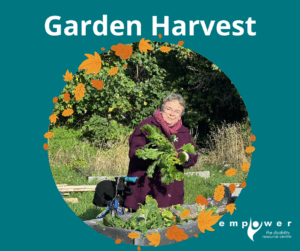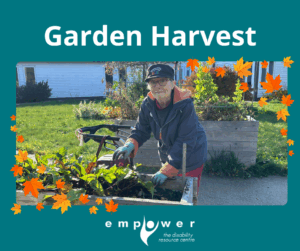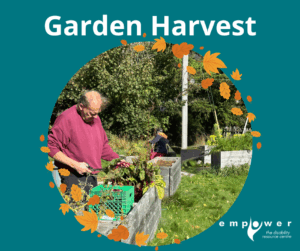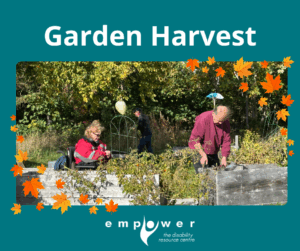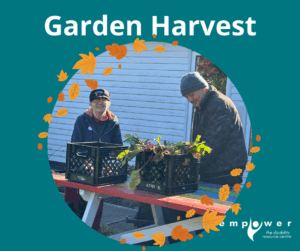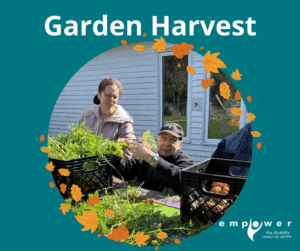You are here: Home / News
December 17, 2025

The 2025 winner of the Young Leader Award for Independent Living is Annalea Pudan-Sproule.
Annalea is a 19-year-old woman residing in Adam’s Cove, having moved to NL in 2019 as a tween to Carbonear. She was diagnosed with autism and ADHD just before she turned 18, having traumatic brain injury and TMJ issues since the age of 9, suffering from migraines for the majority of her life. Without support for her IEP or impactful academic accommodation until after high school graduation, she has made her way to post-secondary, attending Tyndale University in her second year of the Biblical Studies and Theology program.
Her leadership started with her participation with Girl Guides as the former co-chair and chair of the local Girl Guides of Canada Provincial youth forum Newfoundland and Labrador. She won their National Change Maker Award in 2023 and moved up to the National Girl Guide Committee to engage with topics raised by youth forums from all provinces and territories.
Annalea is involved with the Newfoundland and Labrador Youth Parliament. She has participated in numerous pageants in the province, using her public speaking opportunity to talk about intersectionality, placemaking and harm reduction, advocating for persons with disabilities and those impacted by racism by sharing her lived experience of discrimination to give visibility and testimony to the invisible barriers she faced during marginalization in this province.
She aspires to be a part of rural communities exploring religious studies with a desire to serve the residents and wanting to involve herself in politics for this province and achieve equitable representation as a person of colour with disability. That is why she continues to advocate the need to identify and challenge systemic gaps as they happen to read the pulse and manifest change, evolving in real time with the needs of the people, especially youth with disabilities living in rural communities.
(The Young Leader Award for Independent Living is for a young person with a disability, under 30 years of age, who has raised awareness and shown outstanding leadership in promoting full inclusion of people with disabilities in NL.)
December 16, 2025

The 2025 winner of the Members Award for Independent Living is Amanda Howlett!
Amanda’s inspiring journey with EmpowerNL began in 2006 when she joined as a quiet, shy youth group member. Over the years, she blossomed into a strong advocate for people with disabilities, starting to volunteer in 2008 with peer support activities and eventually becoming a Peer Leader for the Dinner Club. Her commitment culminated in her service as a Board Member, where she educates and provides valuable insight.
Furthermore, Amanda demonstrated remarkable professional growth since graduating high school, transitioning from relying on a job coach to working independently in a job she loves, perfectly illustrating the empowering impact of her involvement and dedication to the IL Philosophy. Amanda is a valuable member of EmpowerNL who demonstrates Independent living and encourages other members to engage in their community.
(The Members Award for Independent Living is for a member of EmpowerNL who is active in Centre activities and community events and leads by example for other Members of EmpowerNL.)
December 8, 2025

Join Our Online Information Session
Date: December 11
Time: 1:00 PM to 2:30 PM
We are hosting an online group session to talk about the end of Windows 10 support and what it means for you. We will explain your options in simple, clear language — upgrading to Windows 11, switching to Linux, or choosing a new device. This is a great chance to ask questions and learn what steps to take next.
What We Will Cover
During the session, we will talk about:
- What it means now that Windows 10 support has ended
- How to upgrade to Windows 11
- How Linux can help older computers
- How to stay safe online if you are still using Windows 10
- What to do if you need a new device
- How to Buy a New Computer/Device
We will also explain what to look for when buying a computer/Device, in simple terms. We will go over:
- How much memory (RAM) you need
- How much storage you should have
- What kind of processor to choose
- What size screen might work best for you
- How to match a device to your budget and daily needs
Everyone is welcome. If you want help, support, or just clear answers, this online session is for you.
Please click the link to fill out the registration form: The End of Windows 10 Support Registration Form
November 5, 2025
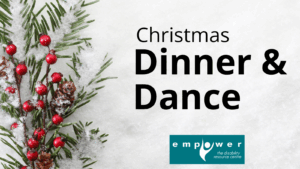
🎄✨ You’re invited to the Empower Christmas Dinner & Dance! ✨🎄
Join us for an evening of good food, great music, and holiday cheer!
📅 Saturday, December 13, 2025
🕕 6:00 pm – 11:00 pm
📍 CLB Armoury (83 Harvey’s Road)
Space is limited — you must register to save your spot! Don’t miss out on one of our favourite events of the year.
Registration Form – EmpowerNL Christmas Dinner and Dance
October 27, 2025
A big congratulations to our Garden Committee on another successful season! 🌿
Last week’s harvest was a great success — and our accessible garden beds made it possible for everyone to take part.
Our garden allows for people of all abilities to come together to enjoy gardening – from planning to planting, tending to harvesting – we learn, share community and enjoy being outdoors.
October 15, 2025
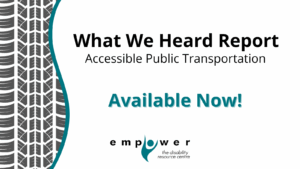
We asked, you answered! Our report, What We Heard: Accessible Public Transportation, shares real feedback from people with disabilities and their ideas for making public transportation more accessible for all.
Thank you to everyone who shared their experiences. Let’s keep the wheels of change moving!
What We Heard – Accessible Public Transportation Report (2.5Mb)
Special thanks to our Advocacy Services team, along with our Social Work students, for all their efforts in making this report a reality.
October 8, 2025
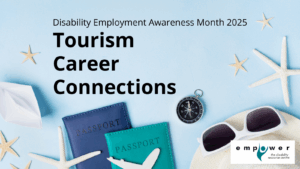
Are you a job seeker with a disability? Have you ever thought about working in the Tourism sector?
We are hosting a Tourism Career Connections gathering to talk about opportunities for employees with disabilities in the Tourism Industry.
Date and time: Thursday, Oct. 30th, 2025 from 1:30pm to 3:00pm
Location: EmpowerNL, 4 Escasoni Place, St. John’s
If you’re interested in the Tourism industry and you’re looking for work, let us help you make the connection! ✈️
September 23, 2025
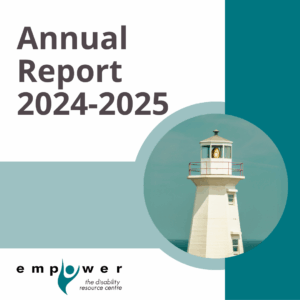
EmpowerNL’s Annual Report for 2024-2025 is now available at the link below.
EmpowerNL Annual Report 2024-2025 (2,840 KB)
As a reminder, our AGM will be held virtually TOMORROW evening.
For details and registration please see Annual General Meeting Notice
September 7, 2025

It’s incredible important to start teaching our kids about disability! But how do we do that, especially if we don’t feel like a “disability expert” to begin with?
Start with finding common ground! Point out shared interests. Talk about common feelings. By finding shared qualities that our children have with a child with disabilities, it not only helps children bond and create friendships, it helps our kids see disabled people as individuals.
A second way to teach children about disability is to use inclusive language.
It is commonly suggested to use person-first language (“person with a disability” rather than “disabled person”) to show respect for the person – however many people with disabilities prefer identity-first language (“autistic person” rather than “person with autism”) – so we recommend to simply ask the person what they prefer, if possible.
It’s also important to avoid stereotypes, stigma and other ableist terminology. With kids, gently correcting misinformation or hurtful statements and teaching that these statements can cause someone to feel sad or excluded is a great way to not only help kids learn but to foster empathy and inclusion.
Another way to help kids learn about disability is to nurture empathy and curiosity.
Providing a safe space for kids to be interested and ask questions not only allows for disability education but lets them know that it is okay to be curious about difference.
Using books and media to tell positive and real stories about different people with disabilities can allow kids to learn about assistive devices, similarities and differences in daily life and interests they may share.
And finally, another great way to teach kids about disability is to promote kindness and inclusion.
Teach children not to point or stare at a person with disabilities and to use kind words when speaking to them. Encourage genuine friendship by teaching your child to ask before offering help to a disabled child – this teaches respect for the autonomy of the child with a disability.
And most importantly, as the adult, step in immediately if you see teasing, bullying or exclusion and let the child know that this behaviour is unacceptable!
August 29, 2025
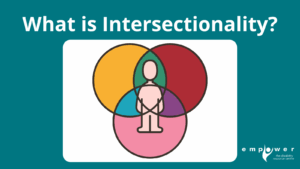
What is intersectionality and why is it important?
Intersectionality means that social identities like race, gender, age, sexual orientation, geographic location and financial status are connected and that when they overlap in a person’s life, they can create extra challenges or discrimination.
Intersectionality can significantly impact a person’s experience of their disability by creating unique challenges and barriers at the intersection of multiple social identities.
When we understand how different types of discrimination are connected, we can break down the systems that cause these disadvantages and create a more fair and inclusive society where everyone’s experiences matter.
Beginning with Gender, women with disabilities often face a double burden of discrimination, experiencing sexism and ableism. This can manifest as barriers to healthcare, employment, and participation in society.
Sexual Orientation and Gender Identity can cause 2SLGBTQIA+ individuals with disabilities to face unique challenges due to homophobia, transphobia, and ableism. This can include discrimination in healthcare, housing, and other essential services.
Further intersections with disability are Race, Ethnicity and Religious Beliefs.
People with disabilities from racial, ethnic and religious minority groups may experience compounded discrimination due to both racism/religious intolerance and ableism. This can lead to disparities in access to healthcare, education, and employment opportunities.
Two more forms of intersectionality with disability are Socioeconomic Status and Age.
Individuals with disabilities who also live in poverty may face additional barriers to accessing essential resources like healthcare, transportation, and assistive technology. This can create a cycle of poverty and disability, further limiting opportunities.
Ageism can intersect with disability, leading to negative stereotypes and assumptions about the abilities of both older adults and young people with disabilities. This can impact access to services, employment, and social participation.
Another two types of intersections with disability are Geographic Location and Culture/Language.
People with disabilities in rural or remote areas may experience limited access to specialized healthcare, support services, and transportation. This can further exacerbate the challenges associated with disability.
Disabled people from culturally and linguistically diverse backgrounds may face additional barriers due to language differences and cultural misunderstandings. This can impact access to healthcare, education, and social services.
So why is Intersectionality important?
Because disability doesn’t exist in isolation.
People with disabilities also have identities connected to race, gender, culture, language, sexual orientation, and more. All of these parts of who we are shape our experiences in the world.
When policies and practices ignore these intersections, some voices get left out — and inequality grows. But when we take them into account, we can create a society that is fairer, more inclusive, and responsive to the real needs of people with disabilities.
Because inclusion means seeing the whole person. 💙




